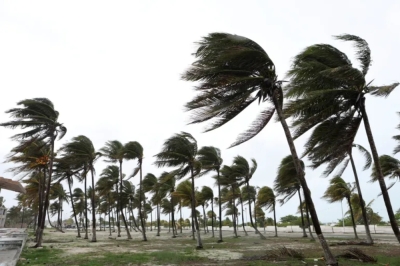
The Birth of Insurance Markets: 14th-Century Italian Maritime Trading
When did the first recognizably modern markets for insurance emerge?
Maristella Botticini delivered the 2023 Presidential Address to the European Economic Association. Drawing on a research paper written with Pietro Buri, Massimo Marinacci, she argues that insurance markets were born in 14th-century Italian maritime trading (“Presidential Address 2023: The Beauty of Uncertainty: The Rise of Insurance Contracts and Markets in Medieval Europe,” Journal of the European Economic Association, 21: 6, December 2023, 2287–2326; video of the lecture is available here). From the abstract:
Maritime insurance developed in medieval Europe is the ancestor of all forms of insurance that appeared subsequently. … [W]e show that medieval merchants had to bear more frequently natural risks (they traveled longer distances) and new human risks with unknown probabilities (they faced unpredictable attacks by corsairs due to increased political fragmentation and commercial competition in Europe). The increased demand for protection in medieval seaborne trade met the supply of protection by a small group of wealthy merchants with a broad information network who could pool risks and profit from selling protection through a novel business device: the insurance contract. A new market—the market for insurance—was then born. Next, analyzing more than 7,000 insurance contracts redacted by notaries and about 100 court proceedings housed in the archives of Barcelona, Florence, Genoa, Palermo, Prato, and Venice, we study the main features of medieval trade, the type of risks faced by merchants, and the characteristics of insurance contracts and markets from 1340 to 1500.
An insurance policy requires the ability to estimate risks of bad outcomes. It requires a group ready to pay premiums so that if the bad outcome occurs, they are protected. It also requires a group that expects to make a profit from selling this insurance over time, but has sufficient resources to pay the claims if and when a series of bad outcomes occurs.
The authors emphasize a number of factors that came together at the start of the insurance industry. The authors write:
First, thanks to major progresses in nautical technologies and techniques that punctuated the Commercial Revolution, maritime commerce took place over longer distances and all year round, whereas trade in the Mediterranean during ancient times typically occurred along the coasts and during the safer summer season. Traveling longer distances and all year round entailed having to cope more frequently with natural risks (e.g., thunderstorms). Second, starting from the late 13th and early 14th centuries, corsairs began disrupting trade routes in the Mediterranean, especially the ones along the Italian and Spanish coasts. Unlike pirates who disrupted seaborne trade since antiquity, corsairs were private citizens hired by governments and states to damage commercial competitors. Their presence and the way they conducted their business created previously unknown and much unpredictable risks to merchants who had to cope with a new type of uncertainty.
Using their data on these original insurance contracts, they can show that the price of the insurance premiums reflected the risks of the trip. Longer trips were exposed to more risks of bad weather. Certain routes were exposed to a greater risk of corsairs. Those who had better information about these risks were able to price insurance more effectively.
First, risks related to human activities (e.g., attacks by corsairs, warfare) seem to have had a relatively greater impact on insurance premiums compared to natural risks (proxied by seasonal risks). Second, distance mattered but the route seems to have had a greater impact on insurance premiums. Longer routes potentially increased the probability of losses from natural risks; however, these risks were mostly avoidable by choosing longer but safer routes. In contrast, regardless of distance, specific routes (e.g., in the Tyrrhenian and the western Mediterranean) were more plagued by human risks (e.g., attacks by corsairs) which were harder to avoid for the majority of sedentary merchants; these merchants did not have a broad information network compared to the few wealthy merchants, who became the key players in pooling risks and selling insurance in the early stages of the development of insurance markets.
Finally, I’ll add that new products can often face social disapproval for a time. For example, in the 19th century there was a time when life insurance was faced with moral disapproval, because it was gambling with God. It took a full-scale marketing campaign by life-insurance companies over several decades, often employing people identified with churches, to argue that actually life insurance was a responsibility that a good person owed to their family. In this case, a question of the time was whether “insurance” was actually a way of making a loan at a high interest rate, in violation of the laws against usury. For a time, some fancy footwork was needed to avoid such a charge.
In Genoa, insurance contracts were first disguised as a way to avoid charges of usury. Initially, an insurance contract was drawn up as mutuum, a fictitious sea loan resembling the foenus nauticum used in ancient times—a loan to be repaid only in the case of safe arrival of the shipment. Then, during the 14th century, the insurance contract took the form of a fictitious sale contract, and only in the 15th century became openly written as an insurance contract. Meanwhile, insurance contracts developed in Florence during the mid-14th century without the need of disguising them under fictitious sale contracts.
Trending
-
1 UK Tech Sector Secures a Third of European VC Funding in 2024
Azamat Abdoullaev -
2 France’s Main Problem is Socialism, Not Elections
Daniel Lacalle -
3 Fed Chair Jerome Powell Reports 'Modest' Progress in Inflation Fight
Daniel Lacalle -
4 AI Investments Drive 47% Increase in US Venture Capital Funding
Felix Yim -
5 The Future of Work: How Significance Drives Employee Engagement
Daniel Burrus





Comments